Section 6
Illustrative Materials
6.1 Fundamentals
6.2 Format
6.3 Descriptions
6.5 Concept Maps, Graphic Organizers, Idea Webs
6.6 Flowcharts
6.7 Forms
6.8 Genealogical and Ancestral Charts
6.10 Timelines
6.11 When a Tactile Graphic Is Not Produced
6.12 Screenshots
6.13 Slide Presentations
6.14 Samples
6.1 Fundamentals
One way of testing a picture description is to see if someone unfamiliar with the book can answer the question, perform the task described, or get the joke without having seen the print book. If a sighted person cannot understand a tactile graphic in a subject with which he is familiar, a similarly knowledgeable braille reader will not understand it either.
6.2 Format
a. Include all print captions accompanying images. Any associated copyright information that may appear alongside the image should be included in a new paragraph after the completion of the caption. Follow print for wording and sequence of information.
b. Some illustrative materials may require a transcriber-generated description.
a. Do not insert blank lines before or after captions or descriptions unless required by other formats, e.g., headings, lists, etc.
b. If the original print copy does not identify an illustration, insert a label in a transcriber's note (e.g., photograph, figure, etc.) followed by the text of the caption on the same line. No punctuation is needed between the identifier and the text because the transcriber's note indicators provide sufficient separation.
Example 6-1: Photograph with Caption

⠀⠀⠀⠀⠀⠀@.<,photograph@.> .7,! ,e>lie/
⠀⠀⠀⠀,"kn ,photograph ( ,abraham
⠀⠀⠀⠀,l9coln.' ,? is a r>e view ( a
⠀⠀⠀⠀be>d.s ,abraham ,l9coln4 444
c. When an illustration has a source citation, place it immediately following the caption using 7-5 margins. If a description of the illustration is required, begin the source citation on the line following the description.
d. Follow print for numbering style used for illustrations (e.g., hyphens, decimals, etc.).
Example 6-2: Figure Number and Caption
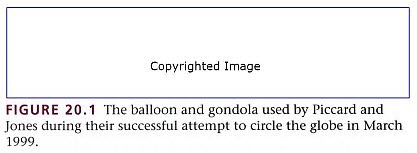
⠀⠀⠀⠀⠀⠀,,figure #bj4a ,! balloon &
⠀⠀⠀⠀gondola us$ by ,pi3>d & ,j"os dur+
⠀⠀⠀⠀_! su3ess;l attempt to circle !
⠀⠀⠀⠀globe 9 ,m>* #aiii4
e. When both a print caption and a transcriber-generated description are needed, begin the description (enclosed in transcriber's note indicators) on the line following the caption. (See Sample 6-1: Figure with Source Information on page 6-13.)
6.3 Descriptions
Example 6-3: Illustration with Description and Caption
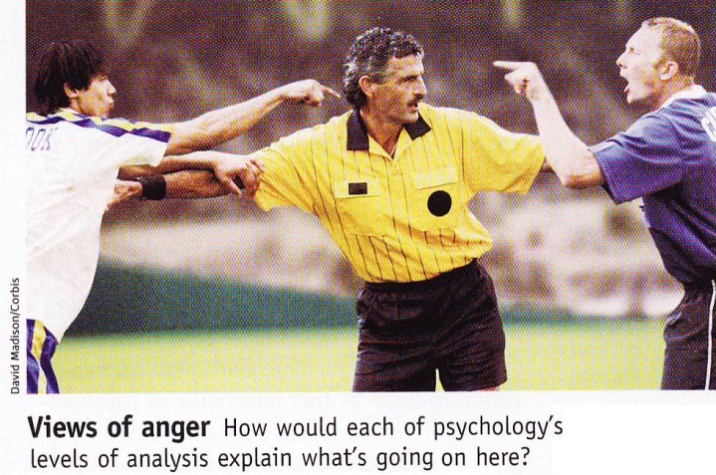
⠀⠀⠀⠀⠀⠀@.<,photograph@.> ^7,views (
⠀⠀⠀⠀ang]^' ,h[ wd ea* ( psy*ology's
⠀⠀⠀⠀levels ( analysis expla9 :at's go+
⠀⠀⠀⠀on "h8
⠀⠀⠀⠀⠀⠀@.<,a ref]ee is sep>at+ two
⠀⠀⠀⠀a?letes :o >e >gu+ & po9t+ f+]s at
⠀⠀⠀⠀ea* o!r4@.>
The key points pertaining to braille production in the STEM Description Guidelines are:
Brevity: Use as few words as possible.
Data: Focus on the data and not on extraneous visual elements.
Clarity: The reader should be able to understand the description in one reading.
Drill-Down Organization: Start with a brief description, followed by more specific information. This allows the reader to get the initial concept and read further if desired.
Tables: Some content is better converted to tables than being provided in a narrative description.
Processes: Some processes presented visually can be converted to nested lists.
Narrative Description: Many illustrations are best described in a linear, narrative format. When writing narrative descriptions, follow the first four guidelines: brevity, data, clarity, and drill-down organization.
The following website provides more detail about each of these points.
6.4 Omitted Illustrations
Figure 6.4 tnDiagram is omitted.tn
6.5 Concept Maps, Graphic Organizers, Idea Webs
Example 6-4: Samples of Concept Map Outlines (Print Only)
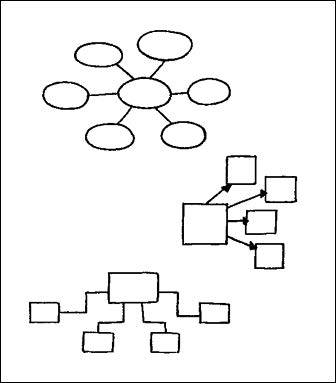
6.6 Flowcharts
6.7 Forms
a. Omit forms that are included only for visual interest and are not necessary for understanding of the content.
b. Use a transcriber's note to identify the form and briefly describe it.
a. Give a brief description of the form first.
b. Do not reproduce print forms spatially.
c. Enclose the form in box lines if appropriate. Avoid boxes within boxes unless it is essential for understanding the layout of the form.
d. Use a 1-3 list or 1-5, 3-5 nested list to present the items in the form.
e. Use an underscore to represent a blank.
(See Sample 6-3: Print Form on page 6-16.)
f. When the lines imply the length of an answer, use an embedded transcriber's note to let the reader know how many write-on-lines appear in print.
g. Use script indicators to represent "written" responses indicating sample replies.
(See Sample 6-4: Print Form with Sample Responses on page 6-18.)
6.8 Genealogical and Ancestral Charts
a. Transcribe descendants' genealogical charts using a nested list format (1-5, 3-5; 1-7, 3-7, 5-7; etc.).
b. Begin descendant charts with the ancestors, and descend to the most current generation.
c. Follow print for symbols used for marriage or other types of relationships (e.g., twins). Note: if line symbols are used, the line terminator may be required.
(See Sample 6-5: Genealogical Chart on page 6-20.)
a. Transcribe ancestral and pedigree charts as lists, using
1-3 margins. Begin with the most current item or person and move backward through the generations. Assign a number to each name or item in the chart, beginning with the most current. List them sequentially, moving back through each generation, in the same direction as the chart. Sequential numeric identification allows the ascending parentage to be followed without using a tactile graphic.
b. Follow each item with any information specific to the item or individual, e.g., dates of birth/death, etc. Immediately follow this information with the two numbers from the list that represents the parent(s). Use a comma to separate the two numbers. Use three dot 5s to represent the missing connection if only one parent is listed.
c. Insert a transcriber's note about the parentage numbers. Sample:
Each individual in the list is given an identifying number. The numbers following an individual's name are the identifying numbers for the parents. Three dot 5s rather than a number are used for a missing parent.
(See Sample 6-6: Ancestral Tree on page 6-22 and Sample 6-7: Pedigree Chart on page 6-24.)
6.9 Organizational Charts
6.10 Timelines
a. Use a 1-3 list format for a simple timeline.
b. Transcribe the date first, followed by the event, on the same line.
c. Include the first and last date shown, with or without an associated event.
d. Omit all other dates without associated events.
e. Insert captions for images that apply to a specific date at appropriate locations.
f. For a complex timeline use a nested list (1-5, 3-5; 1-7, 3-7, 5-7; etc.).
Timeline is across the bottom of pages 44–47.
6.11 When a Tactile Graphic Is Not Produced
6.12 Screenshots
a. Enclose all screenshots in a box.
b. Use transcriber's notes to indicate location and color cues as necessary.
a. Retain headings and separations.
b. Transcribe all information necessary for understanding in a logical order.
c. Ignore color.
a. A tactile graphic is frequently the best option if the purpose of the screenshot is to show the page design.
b. A complete and detailed description of the screenshot is provided when a tactile graphic is not possible. Include the following:
(1) Divide the web page into sections, e.g., navigation panel on the left, the tool bar on the top, the content area, the footer, etc.
(2) Describe text placement as needed.
(3) Indicate hyperlinks, which are a word, phrase, or image that can be clicked on to jump to a different location.
(See Sample 6-15: Screenshot on page 6-36.)
6.13 Slide Presentations
a. Each slide number is treated as the print page number.
b. As text on slides may be informally structured, it is necessary to determine a format for best readability. Most text is formatted using headings, indented/blocked paragraphs, and lists.
c. Enclose any transcriber-generated descriptions in transcriber's note indicators.
d. If speaker's notes are included, use 7-5 margins. Begin a note with the identifier "Note," enclosed in transcriber's note indicators. Continue the note on the same line.
6.14 Samples
Sample 6-1: Figure with Source Information, page 6-13
Sample 6-2: Concept Map, page 6-14
Sample 6-3: Print Form, page 6-16
Sample 6-4: Print Form with Sample Responses, page 6-18
Sample 6-5: Genealogical Chart, page 6-20
Sample 6-6: Ancestral Tree, page 6-22
Sample 6-7: Pedigree Chart, page 6-24
Sample 6-8: Organizational Chart, page 6-26
Sample 6-9: Timeline with Bars, page 6-27
Sample 6-10: Timeline with Multiple Events, page 6-28
Sample 6-11: Simple Shared Date Timeline, page 6-29
Sample 6-12: Complex Shared Timeline, page 6-30
Sample 6-13: Bar Graph, page 6-32
Sample 6-14: Venn Diagram, page 6-34
Sample 6-15: Screenshot, page 6-36
Sample 6-16: Slide Presentation, page 6-38
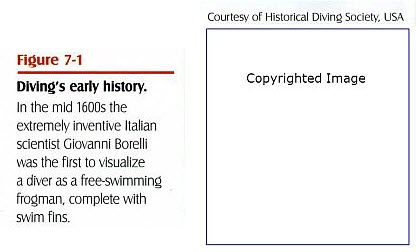
4 ⠀⠀⠀⠀⠀⠀,figure #g-#a ^7,div+'s e>ly
5 ⠀⠀⠀⠀hi/ory4^' ,9 ! mid #afjjs !
6 ⠀⠀⠀⠀extremely 9v5tive⠀,italian sci5ti/
7 ⠀⠀⠀⠀,giovanni ,borelli 0 ! f/ to
8 ⠀⠀⠀⠀visualize a div] z a free-swimm+
9 ⠀⠀⠀⠀frogman1 complete ) swim f9s4
10 ⠀⠀⠀⠀⠀⠀@.<,draw+3 ,a div] ) an air bag &
11 ⠀⠀⠀⠀a valve4 ,! div] is we>+ a full body
12 ⠀⠀⠀⠀div+ suit1 f9s1 cap1 & a mask4@.>
13 ⠀⠀⠀⠀⠀⠀,c\rtesy ( ,hi/orical ,div+
14 ⠀⠀⠀⠀,society1 ,,usa
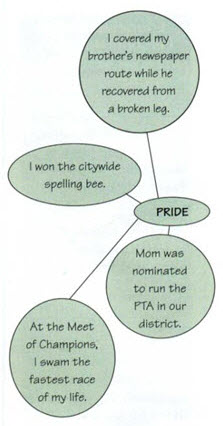
3 ⠀⠀⠀⠀⠀⠀@.<,3cept ,map3 a c5tral 3cept
4 ⠀⠀⠀⠀writt5 9 bold pr9t is %[n 9side an
5 ⠀⠀⠀⠀oval4 ,second>y 3cepts >e %[n 9
6 ⠀⠀⠀⠀regul> pr9t 9side circles & ovals :
7 ⠀⠀⠀⠀>e l9k$ to ! c5tral figure by /rai<t
8 ⠀⠀⠀⠀l9es4@.>
9⠀⠀⠀⠀⠀⠀⠀⠀⠀⠀⠀⠀⠀⠀⠀⠀⠀⠀⠀⠀⠀⠀⠀⠀⠀⠀⠀⠀⠀⠀⠀⠀⠀⠀⠀⠀⠀⠀⠀⠀
10 ,,pride
11 ⠀⠀,i cov]$ my bro!r's newspap] r\te :ile
12⠀⠀⠀⠀⠀he recov]$ f a brok5 leg4
13⠀⠀⠀,i won ! c;ywide spell+ bee4
14⠀⠀⠀,at ! ,meet ( ,*ampions1 ,i swam !
15⠀⠀⠀⠀⠀fa/e/ race ( my life4
16⠀⠀⠀,mom 0 nom9at$ to run ! ,,pta 9 \r
17⠀⠀⠀⠀⠀4trict4

1⠀⠀⠀⠀⠀⠀⠀,five ,wi%es ,wallet ,c>d
2⠀⠀⠀⠀⠀⠀⠀⠀⠀⠀⠀⠀⠀⠀⠀⠀⠀⠀⠀⠀⠀⠀⠀⠀⠀⠀⠀⠀⠀⠀⠀⠀⠀⠀⠀⠀⠀⠀⠀⠀
3 ,important ,notice to ,m$ical ,p]sonnel3
4 ,i h a ,five ,wi%es ,adv.e ,directive4
5⠀⠀⠀⠀⠀⠀⠀⠀⠀⠀⠀⠀⠀⠀⠀⠀⠀⠀⠀⠀⠀⠀⠀⠀⠀⠀⠀⠀⠀⠀⠀⠀⠀⠀⠀⠀⠀⠀⠀⠀
6 ,signature .-
7 ⠀⠀⠀⠀⠀⠀⠀⠀⠀⠀⠀⠀⠀⠀⠀⠀⠀⠀⠀⠀⠀⠀⠀⠀⠀⠀⠀⠀⠀⠀⠀⠀⠀⠀⠀⠀⠀⠀⠀⠀
8 ,pl1se 3sult ? docu;t &_/or my ,h1l?
9 ,c>e ,ag5t 9 an em]g5cy4 ,my ,ag5t is3
10 ⠀⠀⠀⠀⠀⠀⠀⠀⠀⠀⠀⠀⠀⠀⠀⠀⠀⠀⠀⠀⠀⠀⠀⠀⠀⠀⠀⠀⠀⠀⠀⠀⠀⠀⠀⠀⠀⠀⠀⠀
11 ,"n .-
12 ,address .-
13 ,c;y_/,/ate_/,zip .-
14 ,ph"o .-
15 ⠀⠀⠀⠀⠀⠀⠀⠀⠀⠀⠀⠀⠀⠀⠀⠀⠀⠀⠀⠀⠀⠀⠀⠀⠀⠀⠀⠀⠀⠀⠀⠀⠀⠀⠀⠀⠀⠀⠀⠀
16 ,my prim>y c>e physician is3
17 ⠀⠀⠀⠀⠀⠀⠀⠀⠀⠀⠀⠀⠀⠀⠀⠀⠀⠀⠀⠀⠀⠀⠀⠀⠀⠀⠀⠀⠀⠀⠀⠀⠀⠀⠀⠀⠀⠀⠀⠀
18 ,"n .-
19 ,address .-
20 ,c;y_/,/ate_/,zip .-
21 ,ph"o .-
22 ⠀⠀⠀⠀⠀⠀⠀⠀⠀⠀⠀⠀⠀⠀⠀⠀⠀⠀⠀⠀⠀⠀⠀⠀⠀⠀⠀⠀⠀⠀⠀⠀⠀⠀⠀⠀⠀⠀⠀⠀
23 ,my docu;t is locat$ at3 .-
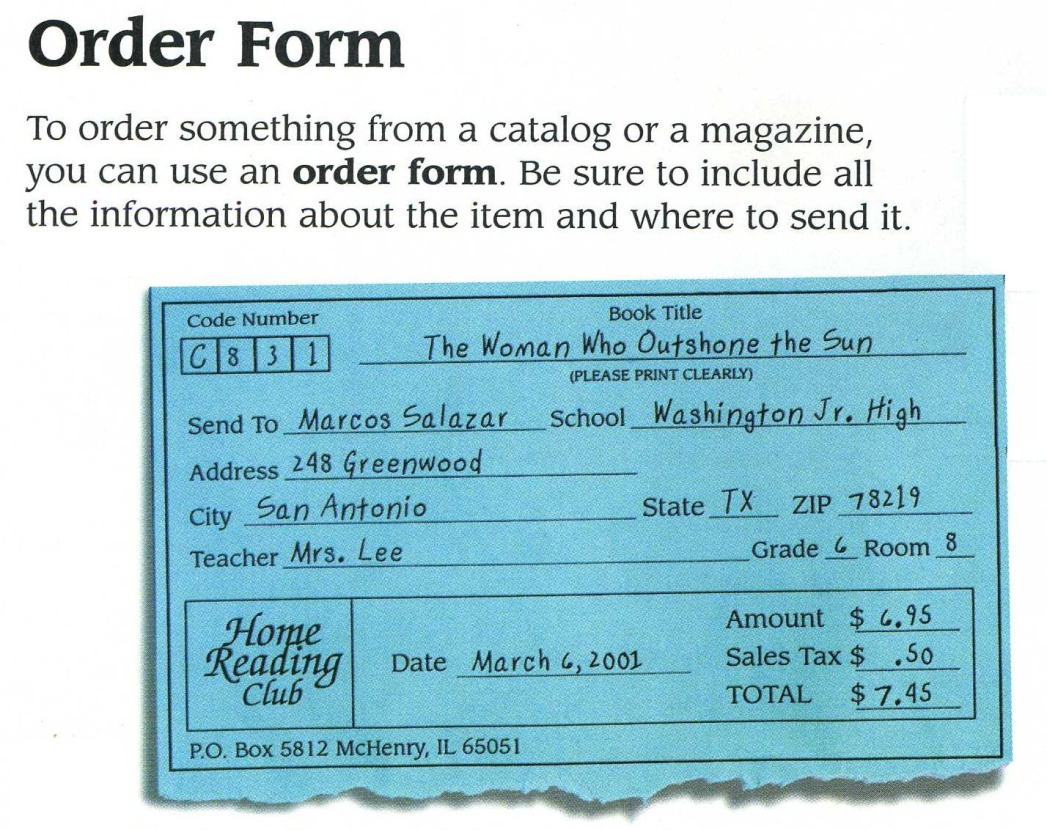
1⠀⠀⠀⠀⠀,ord] ,=m
2⠀,to ord] "s?+ f a catalog or a magaz9e1
3⠀y c use an ^1ord] ^1=m4 ,2 sure to
4⠀9clude all ! 9=ma;n ab ! item & ": to
5⠀s5d x4
6⠀⠀⠀⠀⠀⠀⠀⠀⠀⠀⠀⠀⠀⠀⠀⠀⠀⠀⠀⠀⠀⠀⠀⠀⠀⠀⠀⠀⠀⠀⠀⠀⠀⠀⠀⠀⠀⠀⠀⠀⠀
7⠀7777777777777777777777777777777777777777
8⠀,code ,numb] @1,c#hca
9⠀,book ,title "<,,,pl1se pr9t cle>ly,'">
10 ⠀⠀⠀⠀@7,! ,woman ,:o ,\t%"o ! ,sun@'
11 ,s5d ,to @1,m>cos @1,salaz>
12 ,s*ool @7,wa%+ton ,jr4 ,hi<@'
13 444
14 ,home ,r1d+ ,club
15 ⠀⠀,date @7,m>* #f1 #bjja@'
16 ⠀⠀,am.t @s@1#f4ie
17 ⠀⠀,sales ,tax @s@1#4ej
18 ⠀⠀,,total @s@1#g4de
19 ,p4,o4 ,box #ehab ,mc,h5ry1 ,,il #fejea
20 gggggggggggggggggggggggggggggggggggggggg
21 ⠀⠀⠀⠀⠀⠀⠀⠀⠀⠀⠀⠀⠀⠀⠀⠀⠀⠀⠀⠀⠀⠀⠀⠀⠀⠀⠀⠀⠀⠀⠀⠀⠀⠀⠀⠀⠀⠀⠀⠀
⠀⠀⠀⠀⠀⠀⠀⠀⠀⠀⠀⠀⠀⠀⠀⠀⠀⠀⠀⠀⠀⠀⠀⠀⠀⠀⠀⠀⠀⠀⠀⠀⠀⠀⠀⠀⠀⠀⠀⠀
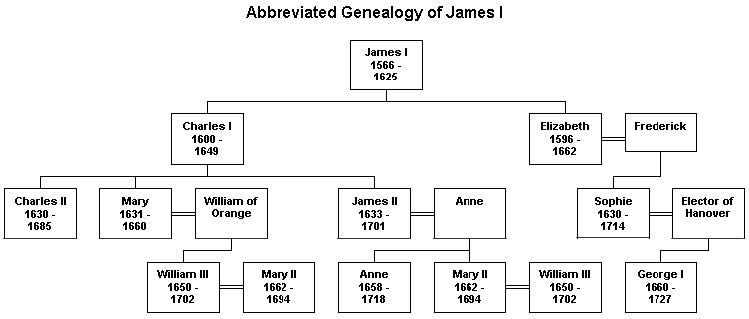
3⠀⠀⠀⠀⠀,a2reviat$ ,g51logy ( ,james ,i
4⠀⠀⠀⠀⠀⠀⠀⠀⠀⠀⠀⠀⠀⠀⠀⠀⠀⠀⠀⠀⠀⠀⠀⠀⠀⠀⠀⠀⠀⠀⠀⠀⠀⠀⠀⠀⠀⠀⠀⠀⠀
5⠀⠀⠀⠀⠀⠀⠀@.<,! symbol .="377⠀9dicates
6⠀⠀⠀⠀⠀m>riage4@.>
7⠀⠀⠀⠀⠀⠀⠀⠀⠀⠀⠀⠀⠀⠀⠀⠀⠀⠀⠀⠀⠀⠀⠀⠀⠀⠀⠀⠀⠀⠀⠀⠀⠀⠀⠀⠀⠀⠀⠀⠀⠀
8⠀,james ,i #aeff-#afbe
9⠀⠀⠀,*>les ,i #afjj-#afdi
10 ⠀⠀⠀⠀,*>les ,,ii #afcj-#afhe
11 ⠀⠀⠀⠀,m>y #afca-#affj"377',william (
12 ⠀⠀⠀⠀⠀⠀⠀⠀,orange
13 ⠀⠀⠀⠀⠀⠀,william ,,iii
14 ⠀⠀⠀⠀⠀⠀⠀⠀#afej-#agjb"377',m>y ,,ii
15 ⠀⠀⠀⠀⠀⠀⠀⠀#affb-#afid
16 ⠀⠀⠀⠀,james ,,ii #afcc-#agja"377',anne
17 ⠀⠀⠀⠀⠀⠀,anne #afeh-#agah
18 ⠀⠀⠀⠀⠀⠀,m>y ,,ii #affb-#afid"377',william
19 ⠀⠀⠀⠀⠀⠀⠀⠀,,iii #afej-#agjb
20 ⠀⠀,elizabe? #aeif-#affb"377',fr$]ick
21 ⠀⠀⠀⠀,sophie #afcj-#agad"377',elector (
22 ⠀⠀⠀⠀⠀⠀⠀⠀,hanov]
23 ⠀⠀⠀⠀⠀⠀,george ,i #affj-#agbg
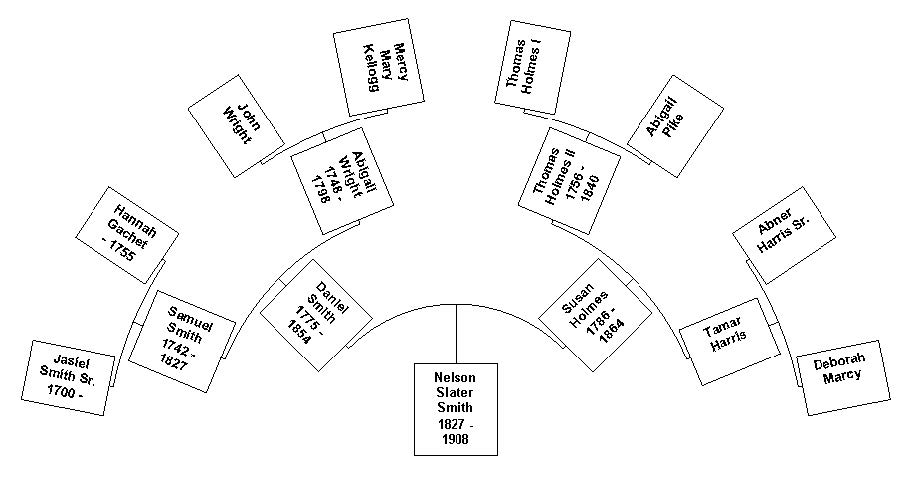
3 ⠀⠀⠀⠀⠀⠀@.<,ea* 9dividual 9 ! ance/ral
4 ⠀⠀⠀⠀tree 2l is giv5 an id5tify+ numb]4
5 ⠀⠀⠀⠀,! numb]s foll[+ an 9dividual's "n
6 ⠀⠀⠀⠀>e ! id5tify+ numb]s = ! p>5ts4@.>
7 ⠀⠀⠀⠀⠀⠀⠀⠀⠀⠀⠀⠀⠀⠀⠀⠀⠀⠀⠀⠀⠀⠀⠀⠀⠀⠀⠀⠀⠀⠀⠀⠀⠀⠀⠀⠀⠀⠀⠀⠀
8 #a ,nelson ,slat] ,smi? #ahbg-#aijh #b1
9 ⠀⠀#c
10 #b ,daniel ,smi? #agge-#ahed #d1 #e
11 #c ,susan ,holmes #aghf-#ahfd #f1 #g
12 #d ,samuel ,smi? #agdb-#ahbg #h1 #i
13 #e ,abigail ,w"r #agdh-#agih #aj1 #aa
14 #f ,?omas ,holmes ,,ii #agef-#ahdj #ab1
15 ⠀⠀#ac
16 #g ,tam> ,h>ris #ad1 #ae
17 #h ,jasiel ,smi? ,sr4 #agjj-
18 #i ,hannah ,ga*et -#agee
19 #aj ,john ,w"r
20 #aa ,m]cy ,m>y ,kellogg
21 #ab ,?omas ,holmes ,i
22 #ac ,abigail ,pike
23 #ad ,abn] ,h>ris ,sr4
24 #ae ,deborah ,m>cy
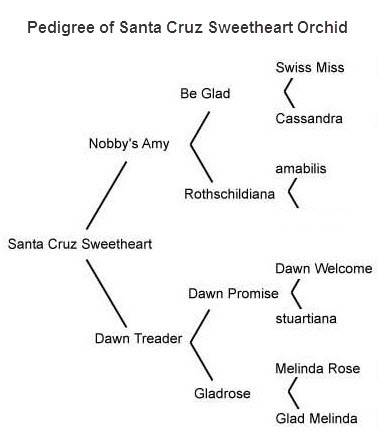
1⠀⠀⠀⠀⠀⠀⠀⠀⠀⠀⠀⠀,p$igree ( ,santa
2⠀⠀⠀⠀⠀⠀⠀⠀⠀,cruz ,sweethe>t ,or*id
3⠀⠀⠀⠀⠀⠀⠀⠀⠀⠀⠀⠀⠀⠀⠀⠀⠀⠀⠀⠀⠀⠀⠀⠀⠀⠀⠀⠀⠀⠀⠀⠀⠀⠀⠀⠀⠀⠀⠀⠀⠀
4⠀⠀⠀⠀⠀⠀⠀@.<,ea* type ( or*id 9 ! li/ is
5⠀⠀⠀⠀⠀giv5 an id5tify+ numb]4 ,! numb]s
6⠀⠀⠀⠀⠀foll[+ ! or*id "n >e ! id5tify+
7⠀⠀⠀⠀⠀numb]s = ! 8p>5ts0 ( t or*id4 ,?ree
8⠀⠀⠀⠀⠀dot #es r ?an a numb] >e us$ = a
9⠀⠀⠀⠀⠀miss+ p>5t4@.>
10 ⠀⠀⠀⠀⠀⠀⠀⠀⠀⠀⠀⠀⠀⠀⠀⠀⠀⠀⠀⠀⠀⠀⠀⠀⠀⠀⠀⠀⠀⠀⠀⠀⠀⠀⠀⠀⠀⠀⠀⠀
11 #a ,santa ,cruz ,sweethe>t #b1 #c
12 #b ,no2y's ,amy #d1 #e
13 #c ,dawn ,tr1d] #f1 #g
14 #d ,2 ,glad #h1 #i
15 #e ,ro?s*ildiana #aj1 #aa
16 #f ,dawn ,promise #ab1 #ac
17 #g ,gladrose #ad1 #ae
18 #h ,swiss ,miss
19 #i ,cass&ra
20 #aj amabilis
21 #aa """
22 #ab ,dawn ,welcome
23 #ac /u>tiana
24 #ad ,mel9da ,rose
25 #ae ,glad ,mel9da
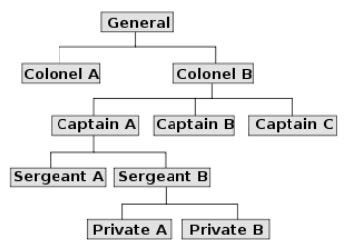
1⠀,g5]al
2⠀⠀⠀,colonel ,a
3⠀⠀⠀,colonel ;,b
4⠀⠀⠀⠀⠀,capta9 ,a
5⠀⠀⠀⠀⠀⠀⠀,s]g1nt ,a
6⠀⠀⠀⠀⠀⠀⠀,s]g1nt ;,b
7⠀⠀⠀⠀⠀⠀⠀⠀⠀,private ,a
8⠀⠀⠀⠀⠀⠀⠀⠀⠀,private ;,b
9⠀⠀⠀⠀⠀,capta9 ;,b
10 ⠀⠀⠀⠀,capta9 ;,c

1⠀⠀⠀⠀⠀⠀⠀@.<,! dates 9 ! "tl9e >e
2⠀⠀⠀⠀⠀approximate4@.>
3⠀⠀⠀⠀⠀⠀⠀⠀⠀⠀⠀⠀⠀⠀⠀⠀⠀⠀⠀⠀⠀⠀⠀⠀⠀⠀⠀⠀⠀⠀⠀⠀⠀⠀⠀⠀⠀⠀⠀⠀⠀
4⠀#afjj
5⠀#afae-#affj ,5gli%1 ,fr5*1 ,dut* settle
6⠀⠀⠀,nor? ,am]ica
7⠀#afbj-#afdj ,rule by ,c>d9al ,ri*elieu
8⠀#afbe-#afgj ,pa9t+s ( ,rembr&t
9⠀#afcj-#afde ,5gli% ,civil ,w>
10 #afdj-#afhe ,fr$]ick ,william ! ,grt
11 ⠀⠀,elector
12 #afde ,(ficial recogni;n ( ! ,dut*
13 ⠀⠀,republic
14 444
15 #agbe
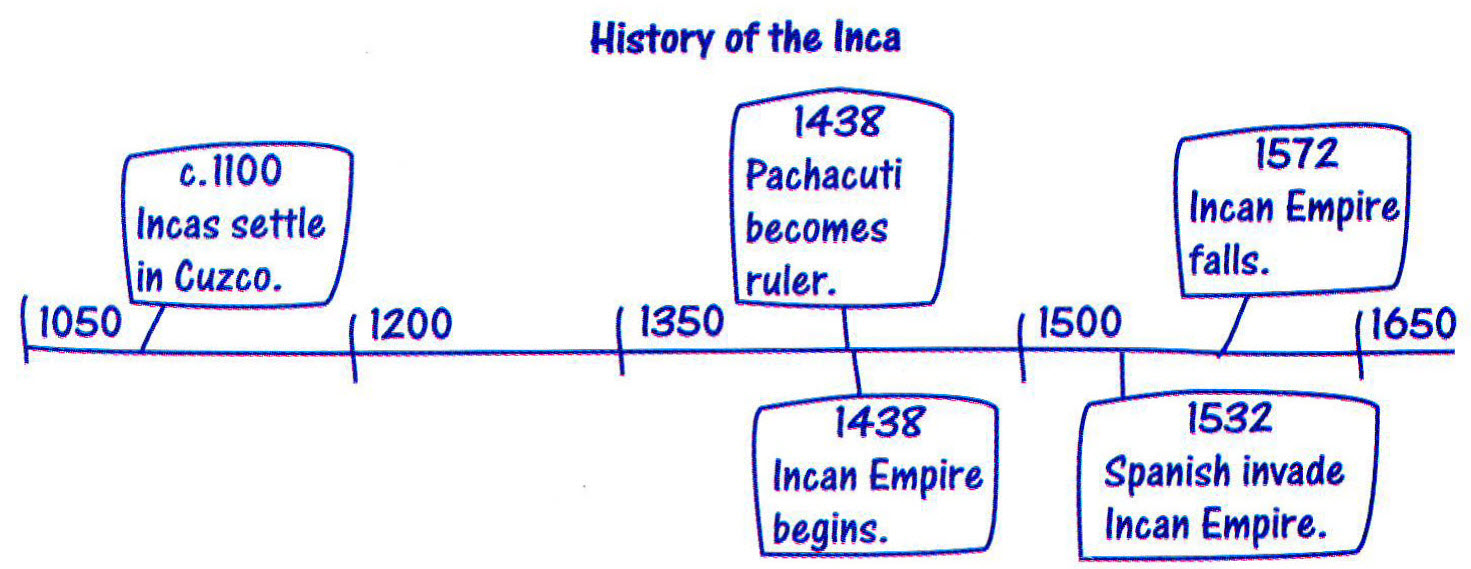
1⠀⠀⠀⠀⠀⠀⠀⠀⠀⠀⠀⠀⠀,hi/ory ( ! ,9ca
2⠀⠀⠀⠀⠀⠀⠀⠀⠀⠀⠀⠀⠀⠀⠀⠀⠀⠀⠀⠀⠀⠀⠀⠀⠀⠀⠀⠀⠀⠀⠀⠀⠀⠀⠀⠀⠀⠀⠀⠀⠀
3⠀#ajej
4⠀c4#aajj ,9cas settle 9 ,cuzco4
5⠀#adch
6⠀⠀⠀,pa*acuti 2comes rul]4
7⠀⠀⠀,9can ,empire 2g9s4
8⠀#aecb ,spani% 9vade ,9can ,empire4
9⠀#aegb ,9can ,empire falls4
10 #afej

1⠀⠀⠀⠀⠀⠀⠀⠀⠀⠀⠀⠀⠀,,maya ,,angel\
2⠀⠀⠀⠀⠀⠀⠀⠀⠀⠀⠀⠀⠀⠀⠀⠀⠀⠀⠀⠀⠀⠀⠀⠀⠀⠀⠀⠀⠀⠀⠀⠀⠀⠀⠀⠀⠀⠀⠀⠀⠀
3⠀⠀⠀⠀⠀⠀⠀@.<,! foll[+ "tl9e is acr ! bottom
4⠀⠀⠀⠀⠀( pages #dgf-#dgg4 ,! "tl9e is 9 two
5⠀⠀⠀⠀⠀sec;ns4 ,,h] ,,life ev5ts >e
6⠀⠀⠀⠀⠀italiciz$4 ,,h] ,,"ts ev5ts >e n
7⠀⠀⠀⠀⠀emphasiz$4@.>
8⠀⠀⠀⠀⠀⠀⠀⠀⠀⠀⠀⠀⠀⠀⠀⠀⠀⠀⠀⠀⠀⠀⠀⠀⠀⠀⠀⠀⠀⠀⠀⠀⠀⠀⠀⠀⠀⠀⠀⠀⠀
9⠀#aibe
10 #aibh .7,is born 9 ,st4 ,l\is on ,april
11 ⠀⠀#d.'
12 #aibi ,grt ,depres.n 2g9s4
13 #aica .7,moves to ,/amps1 ,>kansas.'
14 #aicc ,,fdr laun*es ! ,new ,d1l4
15 ------------------------------------#dgg
16 #aidj .7,moves to ,san ,francisco.'
17 #aida ,unit$ ,/ates 5t]s ,_w ,w> ,,ii4
18 444
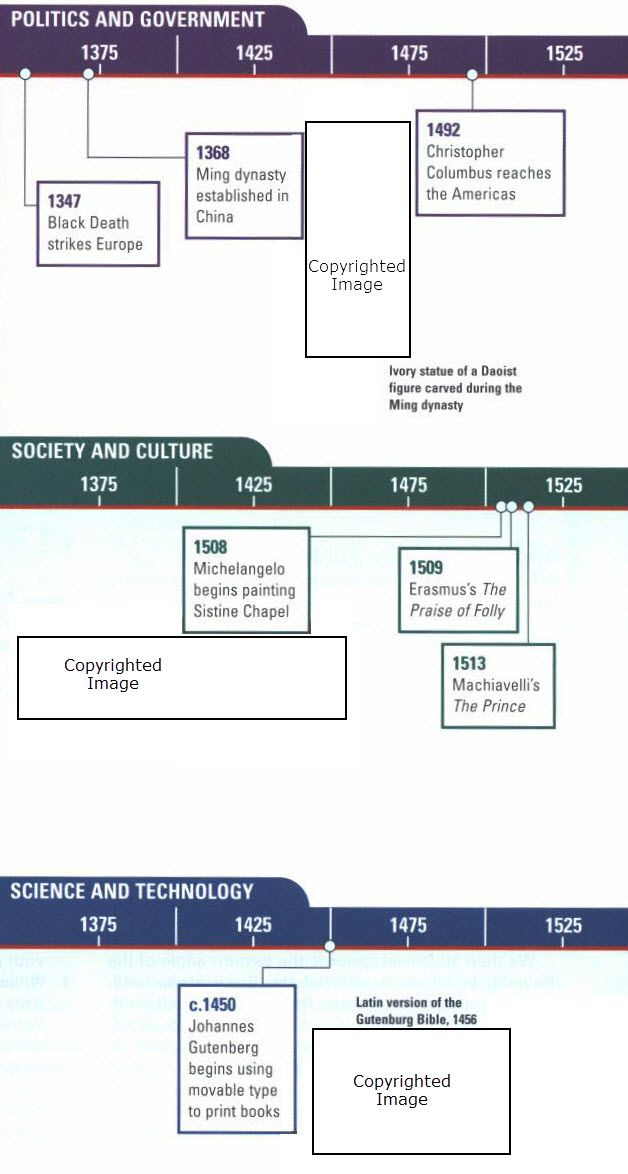
Option 1: Nested List
1⠀,,,politics & gov]n;t,'
2⠀⠀⠀#acdg ,black ,d1? /rikes ,europe
3⠀⠀⠀#acfh ,m+ dyna/y e/abli%$ 9 ,*9a
4⠀⠀⠀⠀⠀⠀⠀@.<,picture@.> ,ivory /atue ( a
5⠀⠀⠀⠀⠀,daoi/ figure c>v$ dur+ ! ,m+ dyna/y
6⠀⠀⠀#adib ,*ri/oph] ,columbus r1*es !
7⠀⠀⠀⠀⠀,am]icas
8⠀⠀⠀#aebe
9⠀,,,society & culture,'
10 ⠀⠀#acge
11 ⠀⠀#aejh ,mi*elangelo 2g9s pa9t+ ,si/9e
12 ⠀⠀⠀⠀,*apel
13 ⠀⠀444
14 ⠀⠀#aebe
Option 2: Heading with List
1⠀⠀⠀⠀⠀,,,politics & gov]n;t,'2⠀#acdg ,black ,d1? /rikes ,europe
3⠀#acfh ,m+ dyna/y e/abli%$ 9 ,*9a
4⠀⠀⠀⠀⠀⠀⠀@.<,picture@.> ,ivory /atue ( a
5⠀⠀⠀⠀⠀,daoi/ figure c>v$ dur+ ! ,m+ dyna/y
6⠀#adib ,*ri/oph] ,columbus r1*es !
7⠀⠀⠀,am]icas
8⠀#aebe
9⠀⠀⠀⠀⠀⠀⠀⠀⠀⠀⠀⠀⠀⠀⠀⠀⠀⠀⠀⠀⠀⠀⠀⠀⠀⠀⠀⠀⠀⠀⠀⠀⠀⠀⠀⠀⠀⠀⠀⠀⠀
10 ⠀⠀⠀⠀,,,society & culture,'
11 #acge
12 #aejh ,mi*elangelo 2g9s pa9t+ ,si/9e
13 ⠀⠀,*apel
14 444
15 #aebe
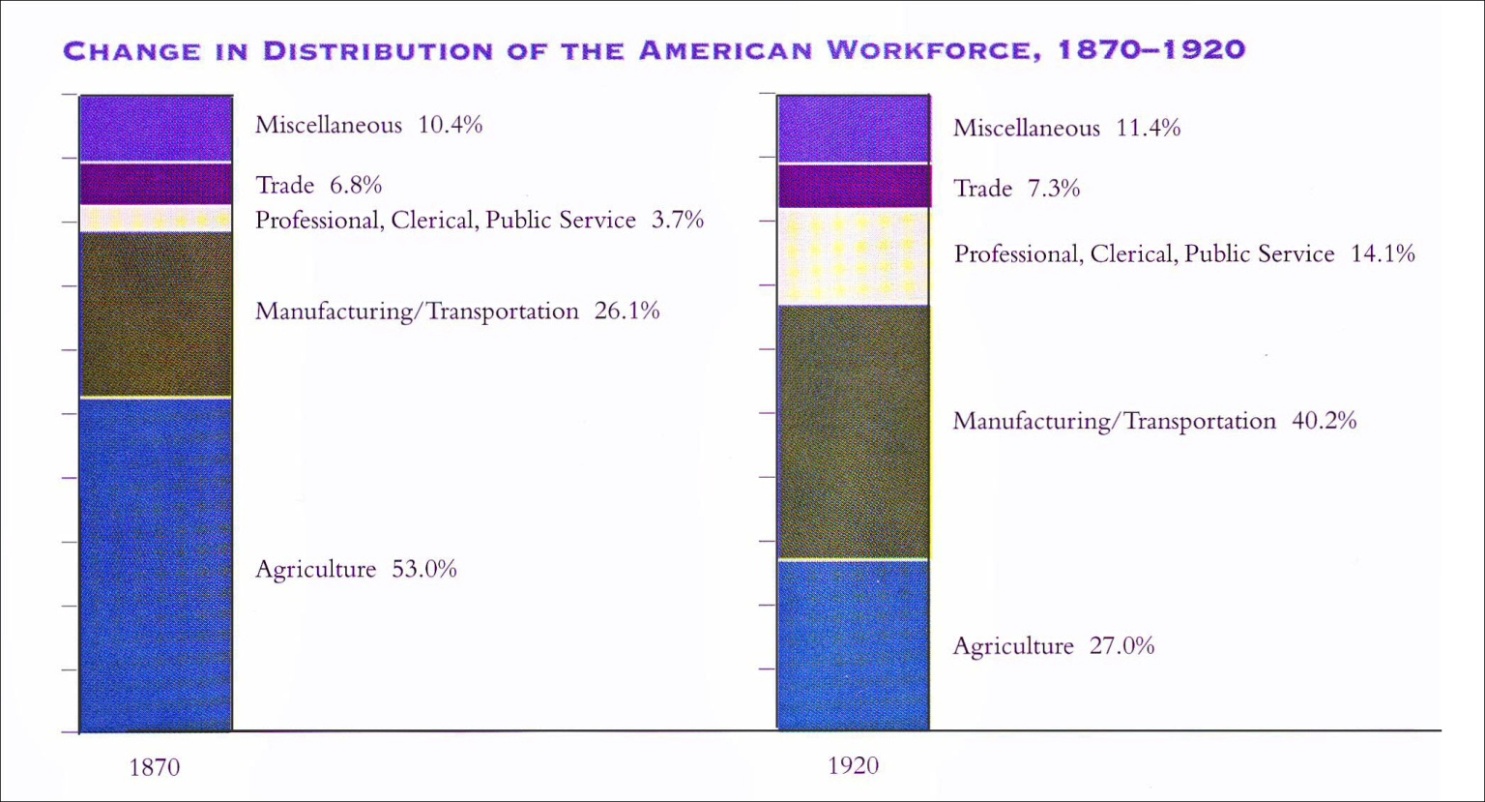
Option 1: List Format
1⠀⠀⠀⠀⠀⠀⠀⠀⠀⠀,*ange 9 ,4tribu;n ( !
2⠀⠀⠀⠀⠀⠀⠀,am]ican ,"w=ce1 #ahgj-#aibj
3⠀⠀⠀⠀⠀⠀⠀⠀⠀⠀⠀⠀⠀⠀⠀⠀⠀⠀⠀⠀⠀⠀⠀⠀⠀⠀⠀⠀⠀⠀⠀⠀⠀⠀⠀⠀⠀⠀⠀⠀⠀
4⠀⠀⠀⠀⠀⠀⠀@.<,data f pr9t b> graphs is
5⠀⠀⠀⠀⠀li/$4@.>
6⠀⠀⠀⠀⠀⠀⠀⠀⠀⠀⠀⠀⠀⠀⠀⠀⠀⠀⠀⠀⠀⠀⠀⠀⠀⠀⠀⠀⠀⠀⠀⠀⠀⠀⠀⠀⠀⠀⠀⠀⠀
7⠀⠀⠀⠀⠀#ahgj
8⠀,miscellane\s #aj4d.0
9⠀,trade #f4h.0
10 444
11 ⠀⠀⠀⠀⠀⠀⠀⠀⠀⠀⠀⠀⠀⠀⠀⠀⠀⠀⠀⠀⠀⠀⠀⠀⠀⠀⠀⠀⠀⠀⠀⠀⠀⠀⠀⠀⠀⠀⠀⠀
12 ⠀⠀⠀⠀#aibj
13 ,miscellane\s #aa4d.0
14 ,trade #g4c.0
15 444
Option 2: Table Format
1⠀⠀⠀⠀⠀⠀⠀⠀⠀⠀,*ange 9 ,4tribu;n ( !
2⠀⠀⠀⠀⠀⠀⠀,am]ican ,"w=ce1 #ahgj-#aibj
3⠀⠀⠀⠀⠀⠀⠀⠀⠀⠀⠀⠀⠀⠀⠀⠀⠀⠀⠀⠀⠀⠀⠀⠀⠀⠀⠀⠀⠀⠀⠀⠀⠀⠀⠀⠀⠀⠀⠀⠀⠀
4⠀⠀⠀⠀⠀⠀⠀@.<,data f pr9t b> graphs is %[n 9
5⠀⠀⠀⠀⠀a table4 ,numb]s 9 ! #ahgj & #aibj
6⠀⠀⠀⠀⠀columns >e p]c5tages4@.>
7⠀⠀⠀⠀⠀⠀⠀⠀⠀⠀⠀⠀⠀⠀⠀⠀⠀⠀⠀⠀⠀⠀⠀⠀⠀⠀⠀⠀⠀⠀⠀⠀⠀⠀⠀⠀⠀⠀⠀⠀⠀
8⠀⠀⠀⠀⠀⠀⠀⠀⠀⠀⠀⠀⠀⠀⠀⠀⠀⠀⠀⠀⠀⠀⠀⠀#ahgj #aibj
9⠀⠀⠀⠀⠀⠀⠀⠀⠀⠀⠀⠀⠀⠀⠀⠀⠀⠀⠀⠀⠀⠀⠀⠀"3333 "3333
10 ,miscellane\s """"""" #aj4d #aa4d
11 ,trade """""""""""""" #f4h #g4c
12 ,pr(es.nal1 ,cl]ical1
13 ⠀⠀,public ,s]vice """ #c4g #ad4a
14 ,manufactur+_/
15 ⠀⠀,transporta;n """"" #bf4a #dj4b
16 ,agriculture """""""" #ec4j #bg4j
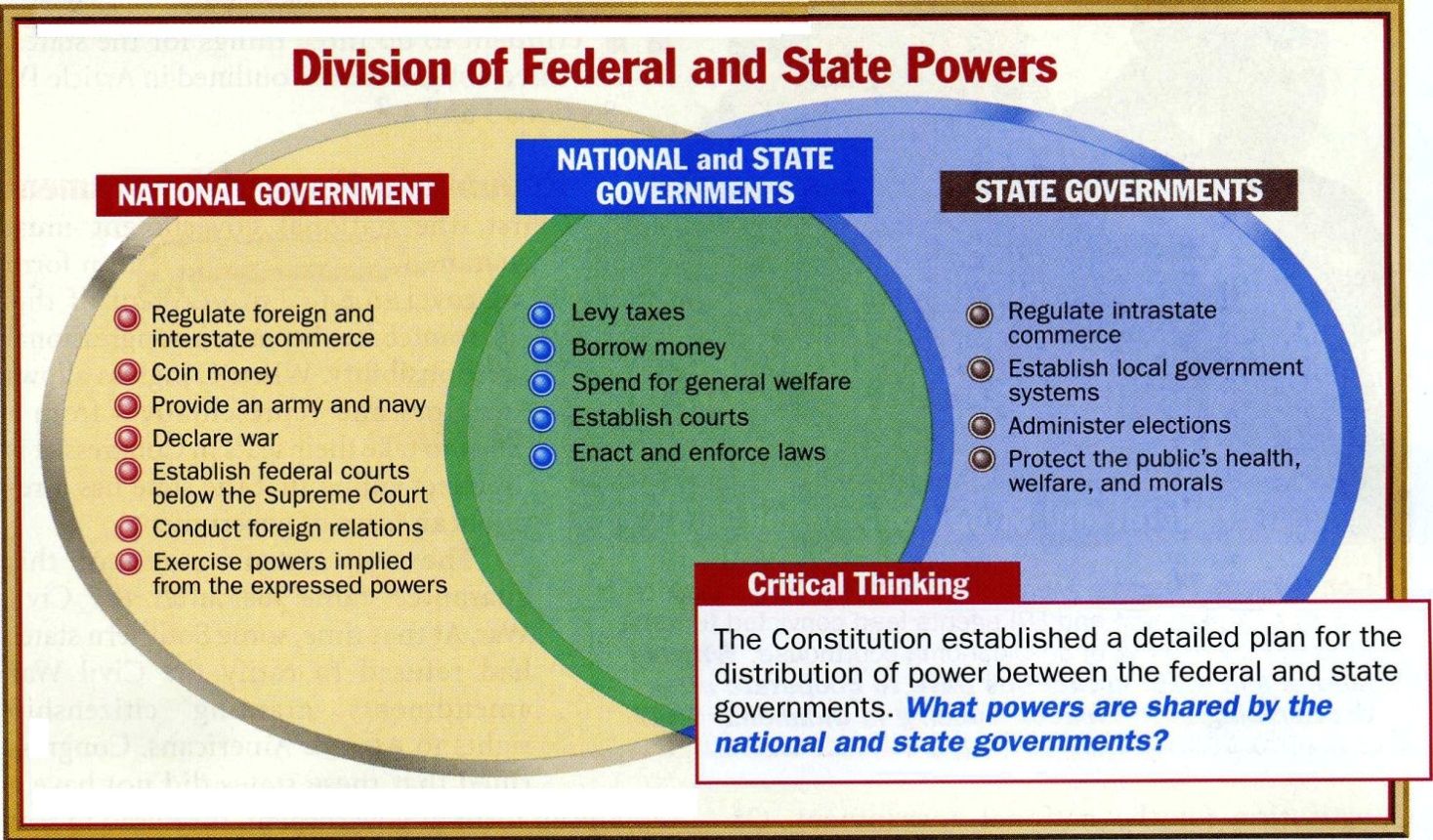
1⠀⠀⠀⠀⠀,critical ,?9k+ b#ig
2⠀,! ,3/itu;n e/abli%$ a detail$ plan 444
3⠀.7,:at p[]s >e %>$ by ! na;nal & /ate
4⠀gov]n;ts8.'
5⠀⠀⠀⠀⠀⠀⠀⠀⠀⠀⠀⠀⠀⠀⠀⠀⠀⠀⠀⠀⠀⠀⠀⠀⠀⠀⠀⠀⠀⠀⠀⠀⠀⠀⠀⠀⠀⠀⠀⠀⠀
6⠀⠀⠀⠀⠀⠀,divi.n ( ,f$]al & ,/ate ,p[]s
7⠀⠀⠀⠀⠀⠀⠀⠀⠀⠀⠀⠀⠀⠀⠀⠀⠀⠀⠀⠀⠀⠀⠀⠀⠀⠀⠀⠀⠀⠀⠀⠀⠀⠀⠀⠀⠀⠀⠀⠀⠀
8⠀⠀⠀⠀⠀⠀⠀@.<,v5n diagram3 ,9=ma;n is %[n 9
9⠀⠀⠀⠀⠀two ov]lapp+ ovals4 ,! 9=ma;n 9 ea*
10 ⠀⠀⠀⠀oval is li/$ "u a sec;n h1d+4@.>
11 ⠀⠀⠀⠀⠀⠀⠀⠀⠀⠀⠀⠀⠀⠀⠀⠀⠀⠀⠀⠀⠀⠀⠀⠀⠀⠀⠀⠀⠀⠀⠀⠀⠀⠀⠀⠀⠀⠀⠀⠀
12 ⠀⠀⠀⠀@.<,sec;n #a@.>
13 ,,na;nal ,,gov]n;t
14 ⠀⠀_4 ,regulate =eign & 9t]/ate comm]ce
15 ⠀⠀_4 ,co9 m"oy
16 ⠀⠀444
17 ⠀⠀_4 ,e/abli% f$]al c\rts 2l ! ,supreme
18 ⠀⠀⠀⠀,c\rt
19 ⠀⠀444
20 ⠀⠀⠀⠀⠀⠀⠀⠀⠀⠀⠀⠀⠀⠀⠀⠀⠀⠀⠀⠀⠀⠀⠀⠀⠀⠀⠀⠀⠀⠀⠀⠀⠀⠀⠀⠀⠀⠀⠀⠀
21 ⠀⠀⠀⠀@.<,ov]lapp+ ,sec;n #b@.>
22 ,,na;nal & ,,/ate ,,gov]n;ts
23 ⠀⠀_4 ,levy taxes
24 ⠀⠀_4 ,borr[ m"oy
25 ⠀⠀444 #,-
—New Braille Page—
1⠀⠀⠀⠀⠀@.<,sec;n #c@.> c#ig
2⠀,,/ate ,,gov]n;ts
3⠀⠀⠀_4 ,regulate 9tra/ate comm]ce
4⠀⠀⠀_4 ,e/abli% local gov]n;t sy/ems
5⠀⠀⠀444
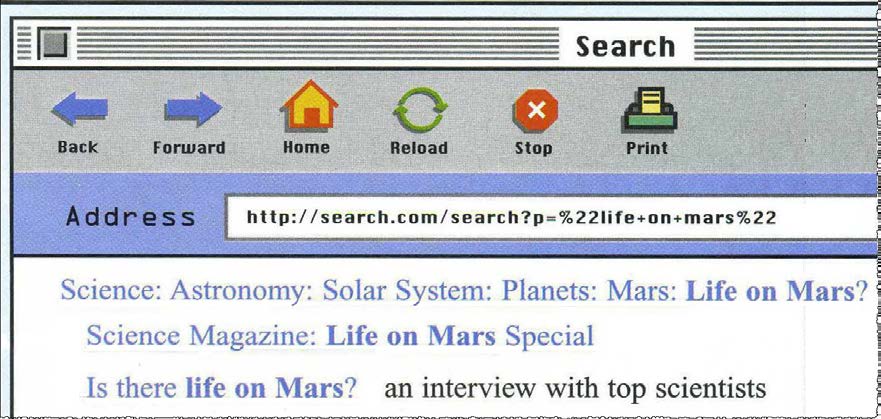
Screenshot for Information Only
3⠀7777777777777777777777777777777777777777
4⠀⠀⠀⠀⠀⠀⠀⠀⠀⠀⠀⠀⠀⠀⠀⠀⠀⠀,se>*
5⠀⠀⠀⠀⠀⠀⠀⠀⠀⠀⠀⠀⠀⠀⠀⠀⠀⠀⠀⠀⠀⠀⠀⠀⠀⠀⠀⠀⠀⠀⠀⠀⠀⠀⠀⠀⠀⠀⠀⠀⠀
6⠀⠀⠀⠀⠀⠀⠀@.<,toolb>@.>
7⠀back =w>d home reload /op pr9t
8⠀⠀⠀⠀⠀⠀⠀⠀⠀⠀⠀⠀⠀⠀⠀⠀⠀⠀⠀⠀⠀⠀⠀⠀⠀⠀⠀⠀⠀⠀⠀⠀⠀⠀⠀⠀⠀⠀⠀⠀⠀
9⠀,address http3_/_/se>*4com_/se>*8p"7.0"
10⠀⠀⠀#bblife"6on"6mars.0#bb
11⠀⠀⠀⠀⠀⠀⠀⠀⠀⠀⠀⠀⠀⠀⠀⠀⠀⠀⠀⠀⠀⠀⠀⠀⠀⠀⠀⠀⠀⠀⠀⠀⠀⠀⠀⠀⠀⠀⠀⠀⠀
12 ⠀⠀⠀⠀⠀⠀@.<,hyp]l9ks@.>
13 ,sci;e3 ,a/ronomy3 ,sol> ,sy/em3
14 ⠀⠀⠀⠀,planets3 ,m>s3 ^7,life on ,m>s8^'
15 ⠀⠀,sci;e ,magaz9e3 ^7,life on ,m>s^'
16 ⠀⠀⠀⠀,special
17 ⠀⠀,is "! ^7life on ,m>s8^' an 9t]view )
18 ⠀⠀⠀⠀top sci5ti/s
19 gggggggggggggggggggggggggggggggggggggggg
Screenshot for Web Page Layout
3⠀7777777777777777777777777777777777777777
4⠀⠀⠀⠀⠀⠀⠀@.<,top3 ,title@.>
5⠀⠀⠀⠀⠀⠀⠀⠀⠀⠀⠀⠀⠀⠀⠀⠀⠀⠀,se>*
6⠀⠀⠀⠀⠀⠀⠀⠀⠀⠀⠀⠀⠀⠀⠀⠀⠀⠀⠀⠀⠀⠀⠀⠀⠀⠀⠀⠀⠀⠀⠀⠀⠀⠀⠀⠀⠀⠀⠀⠀⠀
7⠀⠀⠀⠀⠀⠀⠀@.<,left m>g93 ,toolb>@.>
8⠀back =w>d home reload /op pr9t
9⠀⠀⠀⠀⠀⠀⠀⠀⠀⠀⠀⠀⠀⠀⠀⠀⠀⠀⠀⠀⠀⠀⠀⠀⠀⠀⠀⠀⠀⠀⠀⠀⠀⠀⠀⠀⠀⠀⠀⠀⠀
10 ⠀⠀⠀⠀⠀⠀@.<,left m>g93 ,,url field@.>
11 ,address http3_/_/se>*4com_/se>*8p"7.0"
12 ⠀⠀#bblife"6on"6mars.0#bb
13 ⠀⠀⠀⠀⠀⠀⠀⠀⠀⠀⠀⠀⠀⠀⠀⠀⠀⠀⠀⠀⠀⠀⠀⠀⠀⠀⠀⠀⠀⠀⠀⠀⠀⠀⠀⠀⠀⠀⠀⠀
14 ⠀⠀⠀⠀⠀⠀@.<,left m>g9@.>
15 @#7,sci;e3 ,a/ronomy3 ,sol> ,sy/em3
16 ⠀⠀⠀⠀,planets3 ,m>s3 ^7,life on
17 ⠀⠀⠀⠀,m>s8^'@#'
18 ⠀⠀@#7,sci;e ,magaz9e3 ^7,life on ,m>s^'
19 ⠀⠀⠀⠀,special@#'
20 ⠀⠀@#7,is "! ^7life on ,m>s8^'@#' an
21 ⠀⠀⠀⠀9t]view ) top sci5ti/s
22 gggggggggggggggggggggggggggggggggggggggg
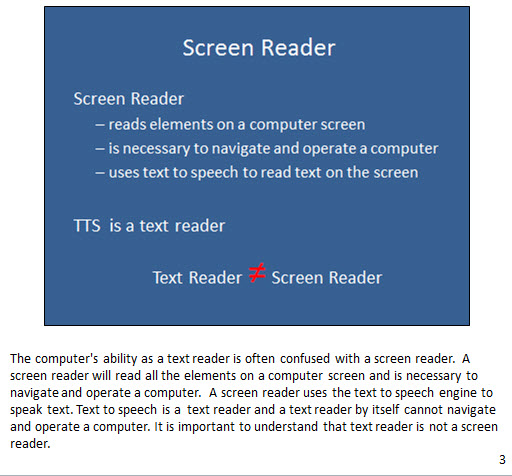
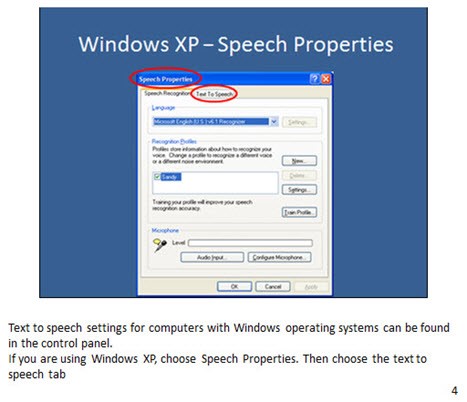
1⠀⠀⠀⠀⠀⠀⠀⠀⠀⠀⠀⠀⠀⠀⠀,scre5 ,r1d]⠀⠀⠀⠀⠀⠀⠀⠀⠀⠀⠀⠀#c
2⠀⠀⠀⠀⠀⠀⠀⠀⠀⠀⠀⠀⠀⠀⠀⠀⠀⠀⠀⠀⠀⠀⠀⠀⠀⠀⠀⠀⠀⠀⠀⠀⠀⠀⠀⠀⠀⠀⠀⠀⠀
3⠀,scre5 ,r1d]
4⠀⠀⠀,- r1ds ele;ts on a comput] scre5
5⠀⠀⠀,- is nec to navigate & op]ate a
6⠀⠀⠀⠀⠀comput]
7⠀⠀⠀,- uses text to spee* to r1d text on !
8⠀⠀⠀⠀⠀scre5
9⠀⠀⠀⠀⠀⠀⠀⠀⠀⠀⠀⠀⠀⠀⠀⠀⠀⠀⠀⠀⠀⠀⠀⠀⠀⠀⠀⠀⠀⠀⠀⠀⠀⠀⠀⠀⠀⠀⠀⠀⠀
10 ,,tts is a text r1d]
11 ⠀⠀,text ,r1d] "7@: @.<n equal@.> ,scre5
12 ⠀⠀⠀⠀,r1d]
13 ⠀⠀⠀⠀⠀⠀⠀⠀⠀⠀⠀⠀⠀⠀⠀⠀⠀⠀⠀⠀⠀⠀⠀⠀⠀⠀⠀⠀⠀⠀⠀⠀⠀⠀⠀⠀⠀⠀⠀⠀
14 ⠀⠀⠀⠀⠀⠀@.<,note@.> ,! comput]'s abil;y z
15 ⠀⠀⠀⠀a text r1d] is (t5 3fus$ ) a scre5
16 ⠀⠀⠀⠀r1d]4 444
17 --------------------------------------#d
18 ⠀⠀⠀⠀⠀⠀⠀⠀⠀⠀⠀⠀⠀⠀⠀⠀⠀⠀⠀⠀⠀⠀⠀⠀⠀⠀⠀⠀⠀⠀⠀⠀⠀⠀⠀⠀⠀⠀⠀⠀
19 ⠀⠀⠀⠀,w9d[s ,,xp ,- ,spee* ,prop]ties
20 ⠀⠀⠀⠀⠀⠀⠀⠀⠀⠀⠀⠀⠀⠀⠀⠀⠀⠀⠀⠀⠀⠀⠀⠀⠀⠀⠀⠀⠀⠀⠀⠀⠀⠀⠀⠀⠀⠀⠀⠀
21 ⠀⠀⠀⠀⠀⠀@.<,scre5%ot3 ,spee* ,prop]ties &
22 ⠀⠀⠀⠀,text ,to ,spee* dialog4 ,language
23 ⠀⠀⠀⠀is set = ,micros(t ,5gli% "<,u4,s4">
24 ⠀⠀⠀⠀v#f4a ,recogniz]2 ,recogni;n
25 ⠀⠀⠀⠀,pr(iles3 .1,s&y is *eck$@.> #,-
—New Braille Page—
1⠀⠀⠀⠀⠀⠀⠀@.<,note@.> ,text to spee* a#d
2⠀⠀⠀⠀⠀sett+s = comput]s ) ,w9d[s op]at+
3⠀⠀⠀⠀⠀sy/ems c 2 f.d 9 ! 3trol panel4
4⠀⠀⠀⠀⠀⠀⠀,if y >e us+ ,w9d[s ,,xp1 444